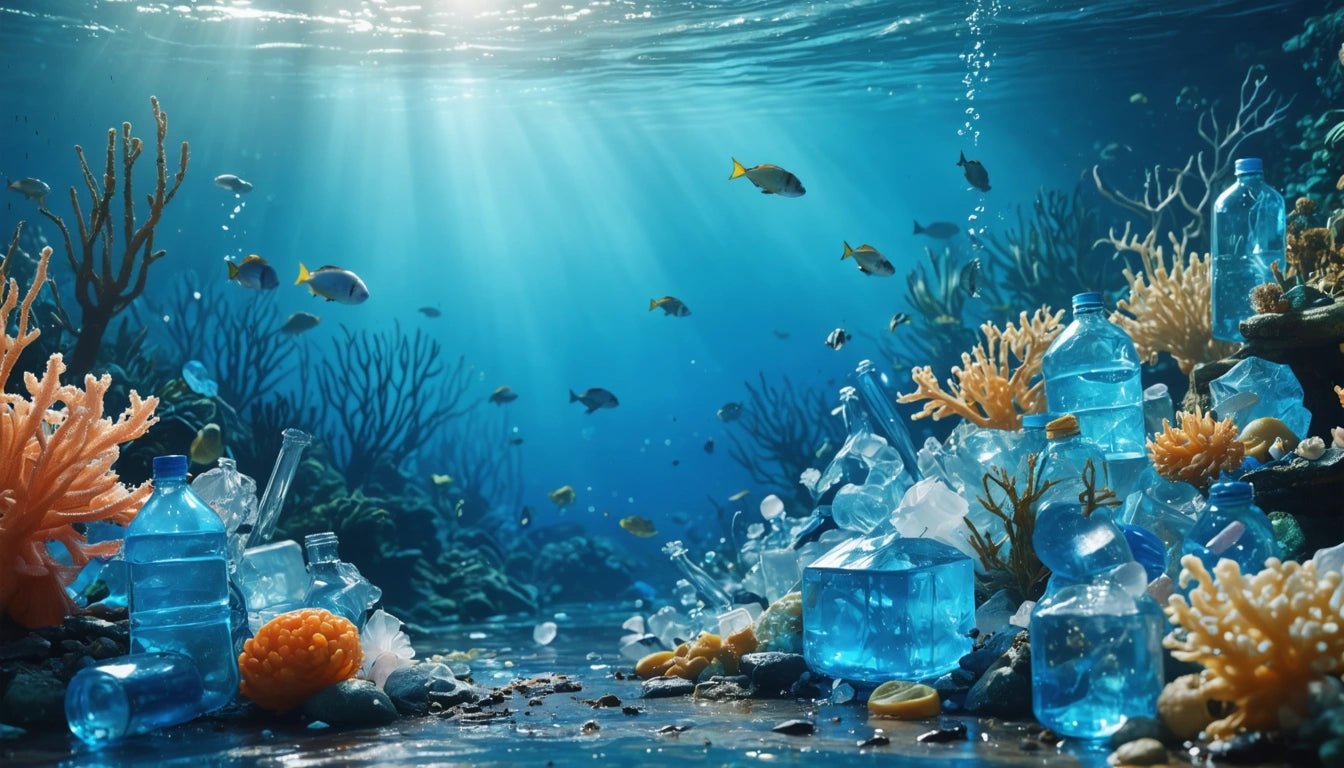Table of Contents
Assessing Ocean Pollution: Understanding the Scale and Impact
The world's oceans cover more than 70% of our planet's surface and contain about 97% of Earth's water. These vast bodies of water serve as crucial ecosystems supporting millions of marine species while regulating our climate and providing food for billions of people. However, the question of how much pollution is in the ocean has become increasingly urgent as human activities continue to threaten these vital resources.
The Scale of Ocean Pollution: By the Numbers
The scale of ocean pollution is staggering. Current estimates suggest that approximately 8 million metric tons of plastic waste enter our oceans annually. This is equivalent to dumping a garbage truck of plastic into the ocean every minute. By 2050, scientists project there could be more plastic than fish in the ocean by weight if current trends continue.
Beyond plastics, chemical pollutants present another significant concern. Over 80,000 chemicals are in commercial use worldwide, with many eventually finding their way into marine environments. Oil spills contribute approximately 706 million gallons of waste oil to oceans each year, while agricultural runoff introduces massive amounts of fertilizers and pesticides into coastal waters.
Major Types of Ocean Pollutants
Plastic Pollution
Plastic pollution represents one of the most visible forms of ocean contamination. Single-use plastics, including items like plastic bags, bottles, and packaging materials, constitute a significant portion of this waste. These materials can take hundreds of years to decompose, breaking down into microplastics that permeate the entire marine ecosystem.
The packaging industry has begun exploring alternatives to traditional plastic packaging. For instance, some innovative companies are developing sustainable packaging solutions that minimize environmental impact while still providing the necessary protection for products.
Chemical Contaminants
Chemical pollutants include industrial waste, pesticides, pharmaceuticals, and heavy metals. Unlike plastic pollution, these contaminants are often invisible but can be equally or more harmful to marine life and ecosystems. Persistent organic pollutants (POPs) like PCBs and dioxins are particularly concerning because they resist breakdown and accumulate in the food chain.
Nutrient Pollution
Excess nutrients from agricultural fertilizers, sewage, and detergents cause eutrophication, leading to harmful algal blooms and oxygen-depleted "dead zones." Currently, there are more than 400 identified dead zones globally, covering a combined area of over 245,000 square kilometers.
Ecological Impact of Ocean Pollution
The consequences of ocean pollution on marine ecosystems are far-reaching:
- Marine life entanglement and ingestion of debris
- Habitat destruction and degradation
- Disruption of marine food webs
- Coral reef bleaching and death
- Species extinction and biodiversity loss
Approximately 100,000 marine mammals and one million seabirds die annually from plastic ingestion or entanglement. Additionally, 90% of coral reefs, which support 25% of all marine species, could be threatened by 2050 due to pollution, climate change, and other stressors.
Human Health Effects from Ocean Pollution
Ocean pollution doesn't just affect marine ecosystems; it has significant implications for human health as well. Contaminated seafood can expose people to various toxins and pollutants, including heavy metals like mercury and lead, which can cause neurological damage and other health problems.
Microplastics have been found in drinking water, table salt, and even the air we breathe. A recent study found that the average person may consume approximately 5 grams of plastic per week, equivalent to eating a credit card. The long-term health effects of this plastic consumption are still being researched, but initial findings suggest potential impacts on hormone function, fertility, and immune system response.
Current Solutions and Mitigation Efforts
Policy and Regulation
International agreements like the United Nations Clean Seas Campaign and the Basel Convention aim to reduce marine pollution through policy changes and waste management improvements. Many countries have implemented bans on single-use plastics, with varying degrees of success. For example, more than 127 countries have implemented some form of legislation to regulate plastic bags.
Technological Innovation
Innovative technologies for ocean cleanup include systems like The Ocean Cleanup project, which aims to remove plastic from the Great Pacific Garbage Patch, and the Seabin Project, which captures floating debris in ports and marinas. Additionally, biodegradable alternatives to traditional plastics are being developed and commercialized.
Consumer Awareness and Action
Individual actions can collectively make a significant impact on reducing ocean pollution. Simple steps include reducing plastic consumption, properly disposing of waste, supporting sustainable seafood, and participating in beach cleanups. Consumer demand has also driven companies to adopt more sustainable packaging practices and reduce waste in their supply chains.
Future Outlook and Necessary Action
While the current state of ocean pollution presents a grim picture, there is reason for cautious optimism. Awareness of the problem has increased dramatically in recent years, leading to greater public pressure for change. However, addressing the full scale of how much pollution is in the ocean will require coordinated global action across multiple fronts.
Scientists emphasize the need for a circular economy approach that redesigns how we produce, consume, and dispose of products. This includes improved waste management systems, especially in developing countries where infrastructure may be lacking. Additionally, continued research into the sources, pathways, and impacts of ocean pollution is essential for developing effective solutions.
The health of our oceans is intrinsically linked to the health of our planet and all its inhabitants. By understanding the scale and impact of ocean pollution, we can work together to protect these vital resources for future generations. The challenge is immense, but with concerted effort and innovation, we can turn the tide on ocean pollution.



















